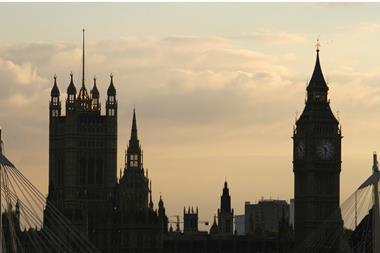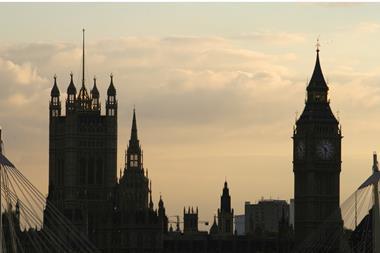The cost cap on default funds in the UK’s new workplace savings system is starting to bite on Diversified Growth Funds (DGF).
The government recently announced plans to cap member-borne charges in defined contribution (DC) default investment funds at 75bps by April 2015.
Britt Hoffmann-Jones, head of DC at consultancy P-Solve, said it was “a real shame that millions of customers are effectively being denied better quality investment management.”
With their focus on asset allocation rather than stock selection as the prime source of return, DGFs have proven popular with pension fund trustees and their consultants.
Research from consultancy Towers Watson showed the proportion of FTSE 100 schemes using a DGF in their default fund rose from around 10% to 70%, over the last five years.
This coincided with a substantial fall in allocations to purely passive investments from the FTSE DC schemes.
Assets under management for the leading handful of DGFs are estimated at £70bn (€79bn).
But P-Solve is one of a number of consultancies now discussing with DGF providers whether they can drop their fees or find some compromise ahead of the cap’s introduction next year.
“There are only so many low-cost providers out there,” said Hoffman-Jones.
Commercial and performance success means that the biggest DGFs are priced close to 100bps. The 75bp cap also has to include administration and any investment platform charges. Consultants reckon 25-35 bps is a fair range for the administration costs.
Andrew Cheseldine, a partner at consultancy LCP, said he had some sympathy with the predicament for DGF managers – “but not a lot.”
LCP clients do have default funds which are a blend of passive and DGFs. He reckoned the mix might have to include more passive in the future if DGF managers cannot lower their fees.
Both Hoffman-Jones and Cheseldine agreed that the cap was the UK government’s defence against accusations that ordinary workers are funding City ‘fat cats’ first and their own retirement second.
Cheseldine added that whatever the awkwardness of the cap, new workplace pensions’ success depends on how eight million people perceive them rather than the reality.
Stephen Bowels, head of DC at Schroders said: “There is a new generation of multi-asset solutions coming through which will be diversified with active allocation, and a pricing point less than 75bps, but it will mean certain assets might not appear such as property and infrastructure, simply because they are too expensive to put into a portfolio at 75bps.”
Cheseldine added that the ambit of fees under scrutiny would only widen, noting that issues such as soft commissions and transaction costs have yet to be factored into the 75bps cap.
One method of altering fee revenues from default funds is to raise the charge on employee contributions and lower the annual management charge proportionately.
This is how NEST, the State-backed fund, operates. Hoffman-Johns said that this mix would work for young schemes where the assets were insubstantial.

























No comments yet